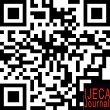Identification and Analysis of Students' Misconceptions Using Three-Tier Multiple Choice Diagnostic Instruments on Thermochemistry Topic
Abstract
Keywords
Full Text:
DOWNLOAD [PDF]References
Adadan, E., & Savasci, F. (2013). International Journal of Science An analysis of 16 – 17-year-old students ’ understanding of solution chemistry concepts using a two-tier diagnostic instrument. International Journal of Science Education, 34(October 2013), 513–544. https://doi.org/10.1080/09500693.2011.636084
Ade Monita, F., & Suharto, D. B. (2016). Identifikasi Dan Analisis Miskonsepsi Siswa Menggunakan Three-Tier Multiple Choice Diagnostic Instrument Pada Konsep Kesetimbangan Kimia. Jurnal Inovasi Pendidikan Sains, 7(1), 27–38.
Astuti, F., Redjeki, T., & Nurhayati, N. (2016). Identifikasi Miskonsepsi Dan Penyebabnya Pada Siswa Kelas Xi Mia Sma Negeri 1 Sukoharjo Tahun Pelajaran 2015/2016 Pada Materi Pokok Stoikiometri. Jurnal Pendidikan Kimia Universitas Sebelas Maret, 5(2), 10–17.
Bain, K., Rodriguez, J. M. G., & Towns, M. H. (2018). Zero-Order Chemical Kinetics as a Context to Investigate Student Understanding of Catalysts and Half-Life. Journal of Chemical Education, 95(5), 716–725. https://doi.org/10.1021/acs.jchemed.7b00974
Brady, J. E. (2003). Kimia Universitas Asas dan Struktur Jilid Dua. Binarupa Aksara.
Chang, R. and Overby, J. (2011). General Chemistry: The Essential Concept. Mc Graw Hill.
Chang, R. (2010). Chemistry 10th edition. McGraw-Hill.
Habiddin, & Page, E. M. (2019). Development and Validation of a Four-Tier Diagnostic Instrument for Chemical Kinetics ( FTDICK ). Indones. J. Chem, 19(3), 720–736. https://doi.org/10.22146/ijc.39218
Halmo, S. M., Sensibaugh, C. A., & Lemons, P. P. (n.d.). Article Student Dif fi culties During Structure – Function Problem Solving S. 453–463. https://doi.org/10.1002/bmb.21166
Ismail, I. I., Samsudin, A., Suhendi, E., & Kaniawati, I. (2015). Diagnostik Miskonsepsi Melalui Listrik Dinamis Four Tier Test. 2015(Snips), 381–384.
Kaltakci-gurel, D., Eryilmaz, A., & Mcdermott, L. C. (2017). Development and application of a four-tier test to assess pre-service physics teachers ’ misconceptions about geometrical optics. Research in Science & Technological Education, 5143(April), 1–23. https://doi.org/10.1080/02635143.2017.1310094
Kanli, U. (2015). Using a Two- tier Test to Analyse Students ’ and Teachers ’ Alternative Concepts in Astronomy. 26(2), 148–165.
Karpudewan, M., Treagust, D. F., Mocerino, M., Won, M., & A. L. Chandrasegaran. (2015). Investigating High School Students ’ Understanding of Chemical Equilibrium Concepts. International Journal of Environmental & Science Education, 10(6), 845–863. https://doi.org/10.12973/ijese.2015.280a
Kirbulut, Z. D. (2014). Using Three-Tier Diagnostic Test to Asse ss Students ’ Misconceptions of States of Matter. 10(5), 509–521. https://doi.org/10.12973/eurasia.2014.1128a
Kurniawan, Y., & Suhandi, A. (2015). The Three Tier-Test for Identification The Quantity ofStudents’ Misconception on Newton’s First Laws. Prociding GTAR, 313–319.
Loh, A. S. L., Subramaniam, R., & Tan, K. C. D. (2014). Exploring students’ understanding of electrochemical cells using an enhanced two-tier diagnostic instrument. Research in Science and Technological Education, 32(3), 229–250. https://doi.org/10.1080/02635143.2014.916669
Milenković, D. D., Hrin, T. N., Segedinac, M. D., & Horva, S. (2016). Development of a Three-Tier Test as a Valid Diagnostic Tool for Identi fi cation of Misconceptions Related to Carbohydrates. Journal of Chemical Education. https://doi.org/10.1021/acs.jchemed.6b00261
Permatasari, M. B., Muchson, M., Hakimah, N., & Rokhim, D. A. (2022). Identifikasi Miskonsepsi Materi Kesetimbangan Kimia Pada Siswa SMA Menggunakan Tes Three Tier Berbasis Web Jurnal Inovasi Pendidikan Kimia Identifikasi Miskonsepsi Materi Kesetimbangan Kimia Pada Siswa SMA Menggunakan Tes Three Tier Berbasis Web. January. https://doi.org/10.15294/jipk.v16i1.29407
Pesman, H., & Eryilmaz, A. L. I. (2010). Development of a Three-Tier Test. Journal of Educational Research, 103, 208–222. https://doi.org/10.1080/00220670903383002
Rodriguez, J.-M. G., & Towns, M. H. (2021). Research and Practice Analysis of biochemistry students ’ graphical reasoning using misconceptions constructivism and fine-grained constructivism : why assumptions matter for research and teaching. Chemistry Education Research and Practice. https://doi.org/10.1039/d1rp00041a
Sihaloho, M., Hadis, S. S., Kilo, A. K., & La Kilo, A. (2021). Diagnosa Miskonsepsi Siswa SMA Negeri 1 Telaga Gorontalo pada Materi Termokimia. Jambura Journal of Educational Chemistry, 3(1), 7–13. https://doi.org/10.34312/jjec.v3i1.7133
Sreenivasulu, B., Subramaniam, R., & Technological, N. (2013). University Students ’ Understanding of University Students ’ Understanding of Chemical Thermodynamics. International Journal of Science Education, 35(September 2013), 37–41. https://doi.org/10.1080/09500693.2012.683460
Stojanovska, M., M. Petruševski, V., & Šoptrajanov, B. (2017). Study of the Use of the Three Levels of Thinking and Representation. Contributions, Section of Natural, Mathematical and Biotechnical Sciences, 35(1), 37–46. https://doi.org/10.20903/csnmbs.masa.2014.35.1.52
Suwarto. (2013). Pengembangan Tes Diagnostik Dalam Pembelajaran. Pustaka Pelajar.
Tan, K. C. D., Taber, K. S., Liew, Y. Q., & Teo, K. L. A. (2019). Chemistry Education Research and Practice. Education Research Chemistry and Practice, 1–45. https://doi.org/10.1039/C8RP00215K
Yan, Y. K. (2017). Research and Practice nature of students ’ alternative conceptions on. Chemistry Education Research and Practice. https://doi.org/10.1039/C7RP00143F
DOI: https://doi.org/10.31764/ijeca.v5i3.11613
Refbacks
- There are currently no refbacks.
Copyright (c) 2022 Irfandi, Rosa Murwindra, Dwi Putri Musdansi, Wimbi Apriwanda N, Chuzairy Hanri

This work is licensed under a Creative Commons Attribution-ShareAlike 4.0 International License.
IJECA (International Journal of Education and Curriculum Application) already indexed:










___________________________________________________________________
| |
____________________________________________________________________
IJECA Publisher Office:







.jpg)




